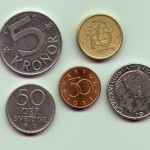Natural gas rose for a second day as the latest in a series of Arctic blasts spread below-normal temperatures across the majority of the US, though upside movement was checked by an upcoming thaw next week.
Natural gas for delivery in April rose by 1.22% to $2.745 per million British thermal units by 10:14 GMT, shifting in a narrow daily range of $2.745-$2.712. The contract gained 0.5% on Tuesday to settle at $2.712, having earlier touched a three-week low of $2.641.
According to NatGasWeather.com, natural gas demand in the US will be easing from high to moderate compared to normal through March 10th, with a warmer weather trend for the eastern and central US over the following seven days, while the West turns slightly cooler.
Above-normal temperatures have spread across East Coast, with highs over the Northeast in the 40s and 50s, while the Southeast sees temperatures peak in the 70s. However, the latest in a series of strong Arctic outbreaks that is sweeping across the central US will introduce below-freezing temperatures to the South and will reach the Northeast tonight, inducing very strong heating demand.
The northern US will once again see lows drop in the single digits and below zero lasting through Saturday morning, NatGasWeather.com said, with heavy snow accumulations occurring over the majority of the US. The West will continue to enjoy warm and dry weather that will extend over the central and southern US early next week as the cold blast retreats.
As next week progresses, Canadian weather systems carrying rain, snow and below-average temperatures will track across the North, but temperatures across the eastern and central regions will rise to near or above the normal as high pressure strengthens, significantly curbing national heating demand. While the West remains warm and dry early in the week, Pacific weather systems arriving in the next days will bring showers and cooler readings.
Stockpiles report
The Energy Information Administration is expected to report another 200+ bcf inventory decline tomorrow as last week’s cold blasts across the majority of the US are taken into account. The government agency will likely say stockpiles dropped by 225-235 bcf in the seven days through February 27th, compared to the five-year average decline of 115 bcf and the year-ago drop of 144 bcf. If confirmed, this would bring inventories to a deficit of 140-150 bcf to the average.
Moreover, this week’s Arctic outbreak will result in one last inventory drop well above the average, to be reflected in the EIA’s March 12th report. The five-year average inventory decline for the week ending March 6th is 116 bcf, while stockpiles fell by 189 bcf a year ago. However, next week’s expected thaw, which will be factored in March 19th’s inventory report, will end the recent string of larger-than-average withdrawals, setting up fairly bearish headwinds in the longer-term.
“February was an incredibly bullish month, yet we could barely go over $3”, Kyle Cooper, director of research with IAF Advisors and Cypress Energy Capital Management in Houston, said for Bloomberg. “We should have seen much larger withdrawals with the temperatures that we witnessed. That suggests when temperatures moderate, we will see builds faster.”
US natural gas stockpiles fell by 219 billion cubic feet in the seven days through February 20th, well above the average drop of 131 bcf, but trailing projections for a 240-bcf decline. Total gas held in US storage amounted to 1.938 trillion cubic feet, 1.5% below the five-year average inventory level of 1.968 trillion, compared to a 2.8% surplus a week earlier.
Temperatures
According to AccuWeather.com, readings in New York on March 5th will range between 14 and 28 degrees Fahrenheit, compared to the average 32-46, before establishing at near-seasonal levels as of March 8th. The low in Chicago tomorrow will be 4 degrees, 23 below usual, but temperatures will rise to near-normal two days later, before peaking at 49 degrees on March 10th, 5 above normal.
Down South, readings in Houston will range between 31 and 46 degrees tomorrow, well below the seasonal 52-70, and will remain cooler-than-usual for the next four days, before recovering as of March 10th. On the West Coast, Los Angeles will see the mercury top 76 degrees on March 5th and rise to 80-82 degrees the following three days, compared to the average 70, before easing to seasonal levels over the next four days.
Pivot points
According to Binary Tribune’s daily analysis, April natural gas futures’ central pivot point stands at $2.696. In case the contract penetrates the first resistance level at $2.750 per million British thermal units, it will encounter next resistance $2.789. If breached, upside movement may attempt to advance to $2.843 per mBtu.
If the energy source drops below its first support level at $2.657 per mBtu, it will next see support at $2.603. If the second key support zone is breached, the power-station fuel’s downward movement may extend to $2.564 per mBtu.
In weekly terms, the central pivot point is at $2.821. The three key resistance levels are as follows: R1 – $2.958, R2 – $3.182, R3 – $3.319. The three key support levels are: S1 – $2.597, S2 – $2.460, S3 – $2.236.





